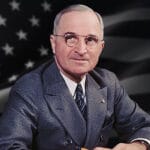The Time of Remembrance and Reconciliation for those who Lost their Lives during WWII takes place on May 8 and 9. It is a time in which the nation, and the world, take a step back, and remember the tragic past, and all the lives lost, so that we as a society can build a more communal and tolerant world. Not many people know that the Holocaust was just one of the many elements that made up the Second World War, with millions of innocent civilians killed in and out of war. We’re giving you everything you need to know.
History of Time of Remembrance and Reconciliation for those who Lost their Lives during WWII
History forms a vital part of our society as it can influence how we live, how we see people, experience politics and entertainment, and even what we choose to do with our lives. One event in history brought so much pain and devastation that it is often difficult to look back at it, but we choose to do that so we can face the past and work on being better humans in our daily lives and as we head into the future. That event is the Second World War.It began in Europe on September 1, 1939, with the German invasion of Poland and the United Kingdom and France declaring war on Germany two days later. It saw the vast majority of the world’s countries, including all of its great powers, form two opposing military alliances: the Allies and the Axis powers. They threw their entire economic, industrial, and scientific capabilities behind their war efforts, blurring the distinction between civilian and military resources. Today, the war is considered by many the bloodiest conflict in human history, resulting in approximately 85 million deaths, the vast majority of whom were civilians. But that wasn’t solely a result of war and battle; genocides like the Holocaust, starvation, massacres, and disease killed tens of millions of people.On November 22, 2004, the U.N. General Assembly declared May 8 and 9 a Time of Remembrance and Reconciliation for those who Lost their Lives during WWII inviting all member states, organizations of the United Nations System, non-governmental organizations, and individuals to observe either one or both of these days appropriately to pay tribute to all victims of the Second World War. The Assembly emphasized that this historic event established the conditions for the creation of the United Nations, designed to save future generations from the scourge of war. It begins on May 8, which is the anniversary of the date the Second World War allies accepted Nazi Germany’s unconditional surrender and the end of Adolf Hitler’s Third Reich.
Time of Remembrance and Reconciliation for those who Lost their Lives during WWII timeline
The war officially starts with the German invasion of Poland.
The Canadians and Americans dispatch forces to eliminate Japanese troops in the Aleutians.
The Second World War comes to an end in Europe, and so does the holocaust.
In November, the U.N. marks May 8 to 9 as a Time of Remembrance and Reconciliation for those who Lost their Lives during W.W.II.
In May, the U.N. holds a commemoration of all war victims on the 65th anniversary of the war.
Time of Remembrance and Reconciliation for those who Lost their Lives during WWII FAQs
Which country won the Second World War?
The Second World War was the most significant and bloodiest conflict in history, involving over 30 countries. The war began with the Nazi invasion of Poland in 1939 and lasted six bloody years until the Allies defeated Nazi Germany and Japan in 1945.
How did the Second World War progress with Japan?
On September 2, 1942, U.S. General Douglas MacArthur accepted Japan’s formal surrender aboard the U.S. battleship Missouri, anchored in Tokyo Bay with a flotilla of over 250 Allied warships.
When did the First World War end?
In 1918, the infusion of American troops and resources into the western front tipped the scales in favor of the Allies. On November 11, 1918, Germany signed an armistice with the Allies. Because of the widespread slaughter and destruction, World War I was dubbed the war to end all wars.
How to Observe Time of Remembrance and Reconciliation for those who Lost their Lives during WWII
-
Visit a war museum
There are hundreds of Second World War museums and memorial centers worldwide. Track down the one nearest to you and take your family or your friends to go and visit it. It’s a great way to honor the many lives that were lost. Simply by reading the facts and looking at the images and footage, you remember those who have passed as a result of war.
-
Tell your kids about the impact of the Second World War
If you have children, a great way to teach them about conflict, human rights, and society is by telling them about the Second World War. By outlining the critical events and discussing how large groups of people were judged and murdered for who they were, you are educating them on tolerance, human rights, and being better people.
-
Read a book about the war
Many books have been written about the Second World War, many nonfiction accounts of what happened, biographies of soldiers and leaders, and even some fictional works that explore the period from a narrative angle. Have a look at what’s out there and see what interests you. You can also buy a book on the war for your kids or a member of the family who likes reading about history.
5 Facts About The Second World War
-
Many soldiers were lost
The Air Force lost more servicemen than the Marine Corps.
-
Babies had to be born
Polish Catholic midwife Stanisawa Leszczyska delivered 3,000 babies at a concentration camp.
-
A pause in automobile production
In 1941, the U.S. produced over three million automobiles; only 139 were made during the war.
-
Many Soviet-born soldiers lost their lives
Only 20% of males born in the Soviet Union in 1923 survived the war.
-
Hitler’s nephew served the United States
Adolf Hitler’s nephew, William Hitler, served in the U.S. Navy during the Second World War.
Why Time of Remembrance and Reconciliation for those who Lost their Lives during WWII is Important
-
Remembering helps keep memories alive
Through memorials and museums and books, we keep the memories of the people who were lost alive, and that is important because they lost their lives due to war, something they did not choose. Simply saying their names or looking at their pictures honors their memories, and by doing that, we remember them.
-
It’s a world-changing event worth commemorating
Even though the Second World War was a tragic event, it is something that happened and had a significant impact on the entire world. The lessons we can learn from the war and how society has developed since is a great indication that we as a people can take the loss and make better lives. It’s part of history, and sadly we can never erase it.
-
It can inspire people to do better
By reading up about the crimes against human beings we are shocked and horrified, but it shows us that when people can work and live alongside one another. These painful events and the many lives lost should teach us a lesson and keep us from repeating the past.
Time of Remembrance and Reconciliation for those who Lost their Lives during WWII dates
| Year | Date | Day |
|---|---|---|
| 2023 | May 8 | Monday |
| 2024 | May 8 | Wednesday |
| 2025 | May 8 | Thursday |
| 2026 | May 8 | Friday |
| 2027 | May 8 | Saturday |
































